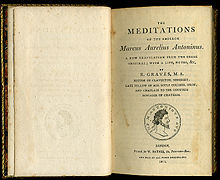


Perhaps the foremost is be specific. Don’t say “a tree,” say, “a willow oak.” Instead of “a riot of colorful blooms” say, “a riot of colorful roses.” The more specific the noun, the more vivid the image in the readers’ minds. And in being specific about flora and fauna, it helps greatly if you know what you’re talking about!
Also, be curious. If you don’t stop with, “Wow! Gorgeous butterfly,” you could quickly learn that these are Tiger Swallowtail Butterflies, and that they are the official state insect of Virginia. Helpful into? Who knows?
As implied in the above statement, getting into nature means getting into learning. My most recent case is the hummingbird moth.

Hummingbird moths are so named because they look and move like hummingbirds. They can remain suspended in front of a flower while they unfurl their long tongues (about twice the length of the moth’s body) to sip nectar. Some claim the beating of their wings hum like hummingbirds. Much as it might look and sound like a tiny bird, it’s an insect.
Deborah Tukua posted fascinating facts about hummingbird moths in Home and Garden. Hummingbird moth is the common name for several moth species, including Common Clearwing, Snowberry Clearwing, Five-Spotted Hawkmoth, and White-Lined Sphinx. (Some species of Hummingbird Moths are limited to Europe, Asia, or Africa.)


Hummingbird moths are plump and spindle-shaped, and they have a a short tail that spreads like a fan. As noted above, color variations are typical, but usually include reddish brown. Their wings are covered in scales which may be lost, leaving their wings clear.
They feed on the nectar of several flowers. In my case, they feed on butterfly bush and verbena. Adults start flying in early spring but are more prominent in summer and early fall. In the north, there is only one generation per year. In the south, usually two at least. They tend to visit the same flowers the same time each day. And because of their reproductive habits (that I won’t get into here), if you have them one year, you are likely to have them again.
So, now you know a bit about a gorgeous insect that lots of people don’t know exists.
Be specific, be curious, keep learning. And I might add, read broadly—beyond the relatively narrow range of your particular interest or genre.
So, I am taking another Nature Writing class this fall. Last spring I became aware of my previous tendency to treat nature vaguely: hot, dreary, enjoying early spring blooms, lots of birds at the feeder. My appreciation of nature is now richer and more precise.
And I’m hoping for more hummingbird moths next year!
Earlier this week I posted a blog about the Iowa State Fair, because it is so in the news just now. But it turned my thoughts to fairs in general.
Writers note: fairs are a national cultural phenomenon, but with regional differences worthy of attention. As you read this blog, think how a state fair might fit your plot.

Kentucky farmwife Catherine Pond wrote about this topic. She traces the beginnings of State Fairs to the New York State Fair of 1841. She notes that State Fairs are big, raucous events in large agricultural states while smaller states and county fares are quieter. Nevertheless, fares at both levels offer fair food, wild rides, tractor pulls, 4-H and other judging events (pies, canned goods, quilts, flowers, pigs, cows, etc.).
“In addition to focusing on agricultural offerings and economy, in the 19th century the state and county fairs also became showcases for recipe judging and all manner of domestic arts.”
WikipediA
This site defines State Fairs as a larger version of a county fair, often including only exhibits or competitors that have won in their categories at local county fairs. If you move on to the WikipediA article on county fairs you are directed to “Agricultural Show.”
The word fair can be traced back to the Latin feria, meaning “holy day.” These events consisted of games, competitions, and festivities. The Roman feriae of the Middle Ages morphed into a place when foreign merchants could buy, sell and trade with the public along with the earlier activities.
In the U.S., agricultural fairs started to catch on in the early 19th century, when the first one was held in Pittsfield, Massachusetts. Organized by Elkanah Watson in 1807, it was a small fair featuring only sheep shearing demonstrations.

Watson urged other farmers to showcase their livestock, where they were judged and recognition awarded. Later county fairs had merchants selling goods and activities for men, women, and children. Soon many small, rural communities held fairs from the Northeast to the Midwest.
The upshot was the New York State Fair of 1841, held in Syracuse for two days. It featured animal exhibits and speeches intended to educate people about agriculture. It included products for both farms and homes. It was “a great success” with 10,000-15,000 attendees. Today that fair attracts 1.2 million visitors, one of the biggest in the country. It spans nearly two weeks, ending on Labor Day

From their roots in agriculture. fairs grew to include new technology such as electricity and airplanes. Then, too, entertainment came to fairs: musical performances, horse races, carnival rides, and vaudeville entertainers. Today there are approximately 2,000 state and county fairs nationwide.

FYI: State Fair of Virginia has fewer than 400,000 attendees.

FYI: Virginia State Fair: 2.86%—which still exceeds 16 other fairs. Some of these are from states that have multiple fairs.


These—and virtually all others—now offer free live concerts, deep fried everything, carnival rides, and crazy competitions based on state identity.


For many, fair food is the highlight of the visit. Classics like funnel cake, burgers, corn dogs, candy apples and candy are everywhere. But there is always a local twist: wine slushies in California, a beef Reuben burger in Nebraska, maple syrup soft serve in Vermont. And offerings are ever more exotic: fried dough injected with Pepsi, chocolate-dipped scorpions, alcohol fried in pocketed pretzel dough, the Indiana Hot Beef Sundae (mashed potatoes, marinated beef, gravy, cheese, corn “sprinkles” and a tomato “cherry” on top).

My personal favorites are the “Buckeyes” found at Ohio fairs—Ohio being the Buckeye State. They have peanut butter centers and chocolate shells that cover all but the required tan spot.
For more information, search fair food online. You can get info by state.
The only time I went to the Ohio State Fair I was well into my twenties. Most of my fair connections are with the Fairfield County Fair. First held in Lancaster, Ohio, the second week of October, 1851, it’s one of the oldest county fairs still operating. This year it will be October 6-12. It is known as The Last and Best of the Season, being arguably the last county fair in the country.
This fair includes bull riding; truck, tractor, and horse pulls; demolition derbies; concerts; band; horse races; and judging of companion animals, farm products, foods, swine, poultry, garden clubs, pygmy goats; as well as a veterans celebration, auction, and monster truck throwdown–and that’s just the first two days!

My sister was born during Fair Week. My mother and sister were taken home from the hospital by ambulance, which swung through the fairgrounds on the way. My sister celebrates her birthday by visiting the fair in the fall. So perhaps her connection is stronger than mine.
On the other hand, the earliest picture I have of me is my mother holding me in a fair photo booth—the sort where you put in coins and get four postage-stamp-sized pictures. One of my favorites is the picture of me and my sister some years later—not looking happy to be there.

I walked through the fairgrounds holding hands with my boyfriend. One year I won a blue ribbon for my 4-H entry of homemade apple sauce. Every year I envied my best friend Sharon whose 4-H project was a milk cow she raised. She got to sleep in the animal barn with her cow and all the other kids who had animals entered. Getting a broken foot when her cow stepped on her seemed a negligent price to pay. I played percussion in the high school marching band that every October marched around the racetrack during the opening ceremonies, often sweltering in our purple wool uniforms trimmed in gold.

Bottom Line for Writers: if you have a character who has a particular attachment to an annual event, such as a fair, be sure to personalize it.
It isn’t the oldest. That would be the New York State Fair, dating from 1841.
It isn’t held first. The California State Fair is held annually in July. This year, it’s July 12-28. Or last: the North Carolina State Fair will be October 17-27.
It isn’t the biggest. The Iowa State Fair (with some 1.13 million visitors) is #7. And rated by Attendance as % of State Population, Iowa’s 35.93% is high, but still only 3rd place.
And according to blt: the blog for lifestyle and travel, it isn’t the best. The Iowa State Fair is ranked #4 among the The 20 Best State Fairs in America.
Those who regularly attend the Iowa State Fair expect all manner of fried food and especially food on a stick. According to the fair website, there are more than 80 varieties of food on a stick are available this year, from apple pie on a stick to golden fried peanut butter and jelly on a stick. There are more than 70 new foods this year, including Bacon Wrapped Pig Wings (Don’t ask. IDK.) and Bauder’s Ultimate Bacon Crisp (ice cream), Big Grove Brewery Deep Fried Apple Pie Craft Beer and Butter Cake Shake, Chocolate Brownie Waffle Stick and Fried Avocado Slices.
Another big draw is a visit to the life-size butter cow, 600 pounds of pure Iowa butter created each year by a local sculptor. It’s a tradition that began in 1911. Once it’s sculpted, the butter cow can be stored and reused for up to 10 years! In addition to the butter cow, one or more companion butter sculptures are on view in the Agriculture Building.
The Iowa State Fair features an Agriculture Expo: cattle and other livestock, an Animal Learning Center, and an Avenue of Breeds that represents 100 species, including 100 to 120 animals.
But face it, none of these account for the national attention focused on this one fair. There seem to be two factor that focus the spotlight on Iowa—and neither is directly related to what state fairs are all about.
One, Iowa holds the first state political caucuses in the nation, in February. Thus, the Iowa State Fair is an opportunity for political candidates (both state and national) to appeal to potential voters, as well as attract canvassers, event planners—any campaign volunteers.
Two, The Des Moines Register has a Political Soapbox at the fair. The Soapbox is a long-standing Iowa tradition. Stacked bales of hay provide a platform for people to address passersby. This year, there is a public schedule of the appearances of more than 20 Democratic Presidential Candidates. Each will have 20 minutes to address the crowds, plus limitless opportunities to mingle and press the flesh.
There’s a long history here. Calvin Coolidge spoke in 1925. Franklin Delano Roosevelt met with other politicians at the fair concerning the Midwestern drought. Dwight Eisenhower gave a speech in 1954. Jimmy Carter visited the fair in 1976—after winning the Democratic nomination.
And the benefits may flow both ways. Three years ago, when Bernie Sanders, Hillary Clinton, and Donald Trump all came to the fair the same day, it set an attendance record.
But not everyone thinks the Iowa State Fair and political candidate connection is a good thing. Everything presidential candidates do is under the media microscope. “…at events such as this one we get into a particularly intense cycle of insincere playacting and brutal theater criticism…” Candidates are praised or savaged based on their performances. “Is the candidate wearing properly casual clothing and shoes? Does she seem at ease perusing the booths and chatting with passersby, as though there weren’t five cameras in her face? How Middle American were the foods she chose to eat? Did she stuff them in her mouth with the proper enthusiasm?”
Waldman’s point is that a performance is no basis for judging a person and his/her suitability and promise as president. “And consider that there might be better ways of figuring out who you should vote for.”
And please note: although 35.93% of state citizens attend the fair, fewer than 16% of Iowans turned out for the 2016 caucuses. There may be numerous reasons people have difficulty participating in caucuses, the fact is that they may be irrelevant. Minnesota, for example, which consistently have the highest voter turnout, in 2016 had only 8% caucus turnout.
So why did I write this blog? I like fairs, and this year—more than ever before—I’m aware of the Iowa State Fair.
In 2016, I wrote Alcohol for Writers: the famous authors infamous for drinking, facts writers should know about alcohol (even if they don’t imbibe), and what to know about your characters’ interactions with drink.
On the subject of alcohol, you can read about its consumption with tobacco in Smokers Drink and Drinkers Smoke. Perhaps not surprisingly, the people who drink the most, as a group, also consume the most tobacco.
Each of these posts explore the dangers of addiction, which I dive into in The Upside of Addiction for Writers. In addition to substance abuse, writers should also consider behavioral addiction, such as gambling, eating, or working. (And don’t forget Workaholics Day.)
Now it’s your turn: how do you treat alcohol in your writing? Let me know in the comments.

In various times, in various places, and for various reasons, people have—and do—cling to the dearly departed. Consider death masks, sarcophagi, grave markers. Or perhaps, more personally, the loved one’s name is carved into a garden bench or painted on a rock. Today, one can get a “Poetree” Cremation Ash Tree, a circular planter containing the deceased ashes that encircles the trunk of a young tree planted in that person’s honor, and fertilizes it. The planter can be inscribed to make a custom cremation cultivation.
Perhaps most frequently, people keep tokens of the deceased—something owned, worn, or loved—a ring, a photo, an antique car, an autographed football, a piece of furniture or art.

Quilts made by Elsie Rich – Library of Congress
01/01/1996
A step beyond keeping a token is repurposing a token. One example would be making a quilt or throw from the dead person’s clothing. Beyond that, a piece of clothing could be framed, used to make a wine cozy, a pillow to hug or a stuffed animal for a grandchild.
As cremation becomes more popular, there is a whole industry in cremains urns. Using modern technology and pictures of the deceased, a head sculpture of the deceased can be created as a container for the ashes.

In addition, there is a plethora of small containers for ashes, typically in the form of a gold or sterling pendant. Cremains are relatively voluminous. At least in theory, everyone who wants a bit of ash in a pendant could have it.
Please note: Catholics are forbidden from keeping the ashes of cremated loved ones at home, scattering them, dividing them among family members, or turning them into mementoes—i.e., they must be buried.

In a more goth period of history, a loved one’s teeth can be turned into jewelry: molar rings, earrings, a necklace with 10 or more teeth on a silver or gold chain—even a denture bangle bracelet.
If the loved one had a tattoo, the tattooed skin can be removed and preserved in a frame suitable for display.
If actual, unchanged body parts are too ghoulish, consider transformation. Ashes can become many things.



10) Relics of Catholic saints. Other religions have preserved Buddha’s tooth and the beard of Muhammad
9) War trophies. The most common one being scalps for Greeks and Native Americans.
8) Decoration. See above. Also bones carved to form ceremonial aprons in Tibet, bone sculptures, etc.
7) Medical science and education. Enough said.
6) Just plain weird. Find out about Jeremy Bentham, who directed his body dissected and the skeleton used to create an auto-icon still held at University College London.
5) To prevent death. In parts of Uganda, the blood and body parts of dead children are used to ward off disease and death and bring prosperity.
4) Made into objects. See above. Also, skulls used as drinking vessels many places.
3) (A kind of) Magic. Juju priests use menstrual blood, hair, nail clippings, body parts, and blood taken from childbirth to create spells which bind believers to the priest and do whatever they are told.
2) As room fittings. The Sedlec Ossuary in the Czech Republic, Our Lady of the Conception of the Capuchins in Rome, the chapel in Czermna, Poland, every inch lined with bones.
1) Proof of kill, often when a warrior was paid according to the number of kills made. For example, Samurai warriors cut off noses and sometimes ears of slain Koreans.

BOTTOM LINE FOR WRITERS: Dead isn’t necessarily gone. Think outside the casket.

I love word origins—so of course I had to check out a word that has nothing to do with baby goats or sleeping toddlers.
“Kid” meaning “child” first appeared in the 16th century, but only became popular in the 19th century.
The “nap” in kidnap has nothing to do with sleep. The “kidnap” kind of “nap” is an obscure and now nearly obsolete English word meaning “to seize or steal,” possibly related to the verb “to nab” (as in “Police nab bank robbers”).
According to The Word Detective online:
“…when ‘kidnap’ first appeared in England in the late 1600s, it not only meant ‘to steal and carry off children,’ but very specifically to snatch children and other young people in order to ship them off to the colonies in North America or the Caribbean to serve as servants or laborers. . . . The word ‘kidnap’ itself is thought to be a grisly souvenir of this practice, invented by the criminals who actually stole children from the slums of England to sell into servitude half a world away.”
According to Merriam-Webster, the current Legal Definition of kidnapping is: an act or instance of the crime of seizing, confining, inveigling, abducting, or carrying away a person by force or fraud often with a demand for ransom or in furtherance of another crime.
Although this definition includes abduction, some make a distinction between abduction and kidnapping. For these people, abduction is defined as using deceit or force to take a person (child or adult) away from home or relatives. The victim typically knows the abductor. Abductions are especially likely during separations, divorces, and custody battles. Estimates are that family members abduct 1,230 children each year. Kidnapping usually involves demanding money from the employer, government, family, or victim in order for the victim to be set free. The kidnapper could be anyone, known or unknown, professional or amateur.
According to Universal Safety & Security Solutions (USSS), kidnapping for ransom is an epidemic on a global scale, and escalating. They report estimates of 15,000 to 20,000 incidents each year, with fewer than 20% of these incidents being reported. Common targets include high net worth people, those who work for large companies in the public domain, or companies with an unpopular product or reputation. USSS identifies six common kidnap and ransom scenarios.
1—Express Kidnapping. Someone gets into a taxi, the driver takes the victim a few blocks away and picks up the kidnapers. They force the victim to several different ATM or banking locations and force him/her to withdraw the maximum allowable. Victims are held until the kidnappers believe they have all the funds available. Sometimes the victim is released unharmed; more often they are robbed and assaulted; some are held longer if the kidnappers believe they can get more money from family or an employer.
2—High Net Worth Individual Kidnapping. These are carried out by experienced or professional gangs. They are strategically planned, requiring surveillance and intelligence gathering to determine habits, security measures, and prime opportunities. The perpetrators demand ransom from the family or company. After the ransom is paid, the captive is typically released.
3—Tiger Kidnapping. It’s strategically planned over time. The victim (or sometimes an object) is taken as leverage to force a third party target to commit an illegal act on behalf of the kidnappers (or their employers). These are rarely reported because the target has also committed a criminal act.
4—Political/Terrorist Kidnapping. Terrorist organizations target expatriates, national natives, westerners, oil and gas workers, non-governmental mid-level managers, workers, and journalists.These kidnappings make political statements, force political concessions, force the release of political prisoners, and/or fund their organizations. Many involve military entities.
5—Virtual Kidnapping. This isn’t an actual abduction or kidnapping. It’s a scam that turns panic, fear, and urgency into revenue. The perpetrators could be individuals or groups. They call the target, say that a child or loved one has been kidnapped, demand immediate payment. They use scare tactics, such as someone screaming in the background. The goal is to get payment before the victims can learn that their loved one isn’t actually being held. The average payment for a virtual kidnapping was $1000 to $3000.
6—Unlawful Detention. There is no ransom demand. It covers a variety of issues, including child custody, illegal imprisonment, prostitution, slave labor, sexual predation, and forced marriages.
Political/terrorist kidnapping is extremely important worldwide. As best I could determine, the Taliban and Al Qaeda groups have been preeminent in this area, making hundreds of millions of dollars kidnapping hostages and releasing them for a ransom payment. Indeed, the United Nations Security Council urged countries not to pay ransom in order to cut off this source of funding for Al Qaeda. Nevertheless, the perpetrators aren’t always terrorist groups. According o a report by researchers at Tilburg University in the Netherlands, thousands of children were kidnapped and held for ransom by senior Eritrea military officers. In Eritrea, all students must serve at a military camp in order to graduate high school. The officers kidnapped students, called their victims’ families, and demanded a ransom of $7,500 to release the victim. If not paid, the military sold the children to Bedouin traffickers.
35% of all global kidnappings reported were in the Asia Pacific region. You can get specifics by country online.
Statistics on kidnapping in the United States are difficult to pin down because it isn’t separately recorded in the Uniform Crime Report. One can only assume that motivation and tactics are in line with those outlined above. Unlike the five countries listed above, official U.S. policy is to NOT pay ransom.
Anja Shortland, a Reader in Political Economics at King’s College, London, is prominent in discussing kidnapping as business. She points out that most kidnappings happen in countries with weak governments and disputed territories. But regardless of venue, what is the right price for a loved one’s life? Shortland’s position is that it’s a negotiation like any other.
Three factors make the “business deal” of kidnapping for ransom especially difficult to close.
Last But Not Least:
Yep, it happens—and there are two general types.
Police have discovered many “fake” cases of kidnapping for ransom in which people hide themselves for some time because of (1) business problems or (2) family disputes or (3) to extort money from their own families. Some 18 fake cases were reported in Lahore alone last year.
And then there are thrill-seekers who get themselves kidnapped for the excitement of the experience. Several companies that provide such a service advertise online, offering a chance to “feel the rush, the thrill and the fear of a real kidnapping; feel and understand the psychological shock of victims; and grow the reality of kidnapping as you wish by integrating into a larger-than-life scenario.”
Before you decide to sell a few spare body parts to finance your retirement, be aware of two things: (1) what it costs to buy is not what the seller gets to sell; and (2) where the buying and selling happens makes an enormous difference. For example, consider kidneys and livers.
Kidneys: average paid to buyer, $150,000; average paid to seller, $5,000. Kidney buyers pay $10,000 in Thailand but $300,000 in Singapore. Income to sellers ranges from $650 in Kenya to $200,000 in Ukraine.
Livers: liver buyer in China, $21,900; seller gets $3,660.
If you do want to sell something you can spare, consider selling half of your healthy liver (which can regenerate a full liver for both donor and recipient). Even more lucrative, have your character sell a gram or two of bone marrow at $23,000 per gram. Properly done, it’s quick, with little to no pain. Although it’s legal to donate, selling isn’t. So, yes, it’s illegal, but the payoff is huge: compare to cocaine, at $150 per gram. If you want to stay legal, consider selling enough eggs for an in vitro fertilization cycle for $8,000.
Short answer: demand outpaces legal supply. Less than a third of US patients on the kidney waitlist will get a legal kidney to save their lives. Fifty percent of waitlist patients overall die waiting for an organ. It is estimated that 10% of all organs and tissues used in surgical transplants come from the black market.
Writers, in particular, might want to know where these body parts come from. Consider press coverage of organ harvesting from children in Mexico and from prisoners in China. These methods are clearly illegal and/or unethical. Some poor people sell an organ for their own profit. The only country in the world where buying or selling human organs is legal is Iran—and then only if both the buyer and the seller are Iranian citizens.
My recent travels to Bethany Beach rekindled my interest in road trips.
I wrote about road trips back in 2010, advising writers to note the names of roads, businesses, schools–whatever–as they traveled. Venture off the congested interstate to the byways and small towns where the names really get good. Sometimes a compelling name is enough to spark a story. Consider Bone Yard Road or Fresh Fire Church of God as possible settings.

Leave space in your itinerary and in your mindset to come upon the unexpected, e.g. an African/Mediterranean vegan cafe in Santa Fe or a salt mine in Warsaw, Poland, that’s been carved into a salt cathedral. Those locations might stimulate a scene or add a quirk to your story.

While I’m on the road, I keep a daily journal to record the vivid details not found in a tourist pamphlet. Think Jack Kerouac. John McPhee. Paul Theroux.
How do you record your road trips? Let me know in the comments.